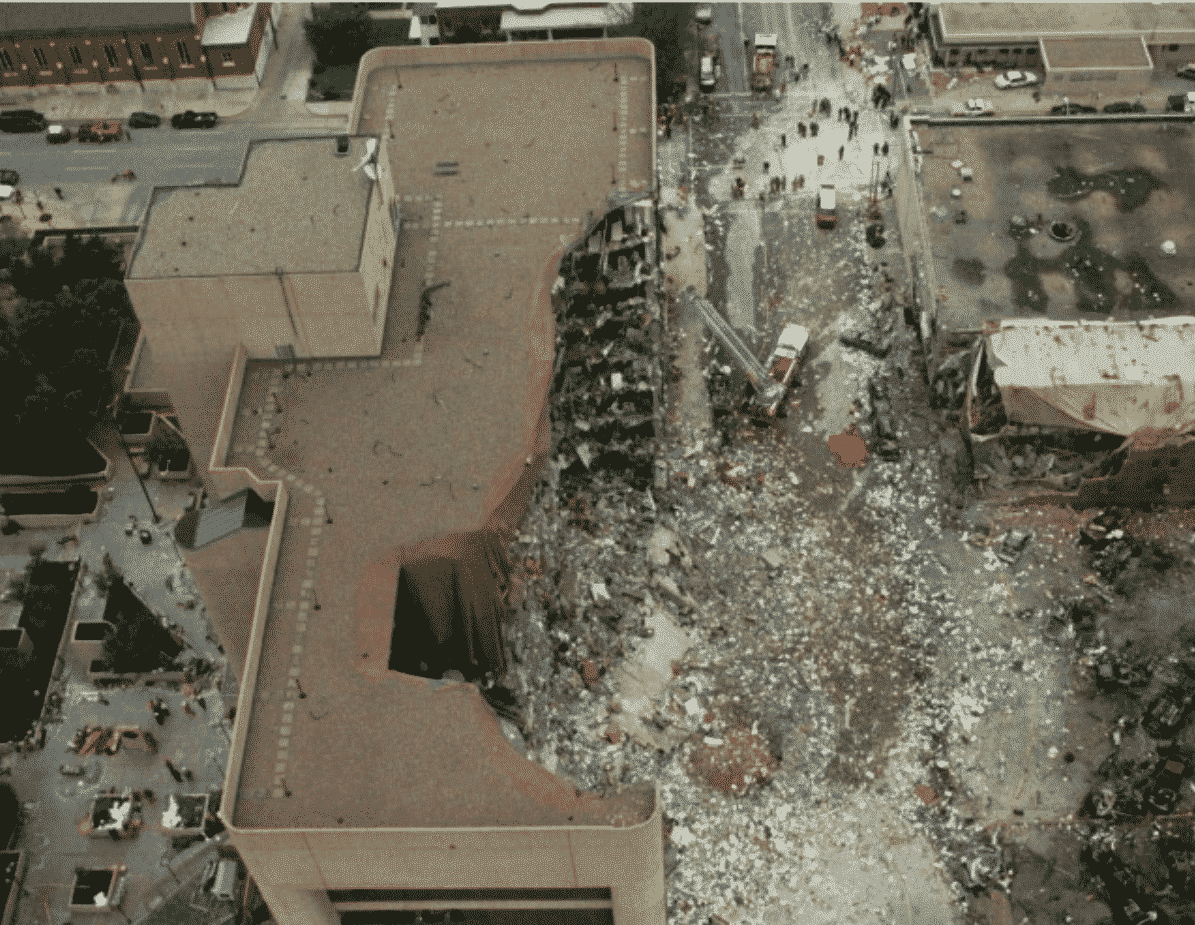
by Ian Greenhalgh with Jeff Smith
Originally published September 4, 2015
Introduction by the Senior Editor
The article below is four years old. It is one of a series of articles written by VT a partnership of VT editors including particle physicist and nuclear weapons inspector, Jeff Smith.

In the interim, I did a search for what is still available. I remember debriefing Dmitri Khalezov on OK City. Khalezov, who Gene spent some time within Thailand, had been approached by Mike Harari (very real Mossad) to take part in the Bali bombing.
Harari had described his own role in staging OK City, which our IAEA source cites below as a nuclear event.
What we advocate is clear, when solid information hits like this article, those who purposefully ignore it and publish wildly fake material, generally, the “troofer” group still providing cover for 9/11…
For those who don’t know, that would be nearly all of you (and rightly so….not everyone can be trained in how crazy the world really is), the anti-Zionist and “Israel did 9/11” world is almost entirely controlled by those responsible for 9/11, some of whom clearly were Israelis. Picture this, a cheap analogy if you will. You want to be shot at but you can pick who does it. The choices are ping pong balls or .308.
Think of “troofers” like ping pong ball people. From Ian and Jeff, 2015:
We are now at the fifth generation of nuclear weapons design which means that a number of different types of nuclear weapons exist and they differ substantially in effect from the weapons we are familiar with from all those 1950s newsreels of huge atomic blasts.
Modern 5th gen weapons are often of much lower yield than the Hiroshima and Nagasaki bombs with yields of less than 1 kiloton (1000 tonnes of TNT equivalent). They also have different manners of the explosion – instead of one big bang they can have much longer burn times producing visual effects that look quite different.
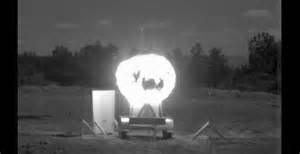
This is why it is important to learn a little about these new weapons types and how their explosions would appear visually as it will better enable the identification of nuclear events in the future; allowing people to discern between the explosion of a warehouse full of rocket fuel and a nuclear explosion.
Make no mistake, we have entered into a dangerous new age where the use of these advanced low yield nuclear weapons will become increasingly commonplace; therefore we all need to become better informed about these weapons so it becomes harder to use them covertly to commit acts of terrorism.
The uranium hydride bomb is a variant design of the atomic bomb first proposed as far back as 1939. It uses deuterium, an isotope of hydrogen, to act as a neutron moderator in a U235 based implosion weapon. The neutron chain reaction is a slow nuclear fission process vs a fast fission process. Due to the use of slower-moving neutrons, the bomb’s total explosive power is adversely affected by the thermal cooling of neutrons since it delays the neutron multiplication factor or Alpha production rate.
Two uranium hydride bombs are known to have been tested back in the 1950s, the Ruth and Ray test explosions in Operation Upshot-Knothole, 1956. The tests produced a yield comparable to about 200 ton of TNT or more each. However, both tests were considered to be fizzle yields at the time. Since the trend was for weapons with a bigger bang, the technology was shelved for over 20 years.
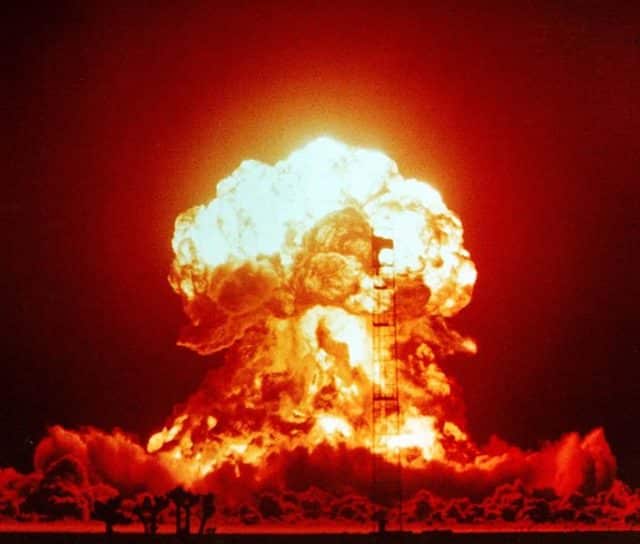
In a delayed or slow fission nuclear weapon design the hydrogen deuterides in the form of uranium hydride (UH3) or plutonium hydride (PUH3) moderates (slows) the neutrons, thereby increasing the neutron cross-section for neutron absorption. The result is a much lower required critical mass, and thus a smaller weapon thereby reducing the amount of U235 or plutonium PU239 needed for an explosion. The result in the original 1956 design was that the slower neutrons delayed the reaction time too much and reduced the efficiency of the weapon.
Its effect was to increase the time between subsequent neutron generation events that are necessary for a rapid explosion and it creates a problem in the containment of the explosion; the inertia that is used to confine implosion-type bombs will not be able to confine all of the reaction in time. The end result is a lower yield fizzle blast with a very long burn time instead of a big bang. The predicted energy yield would be in the order of 1kt or 1000 tons TNT up to 5 kt equivalent instead of a standard 20 kt blast for the same amount of fissile material used.
In a classical nuclear weapon design, a critical mass is supposed to go more or less instantly into an explosion. However, if half the critical mass, of U235 or U239 is undergoing delayed or moderated fission the process will continue so long as Alpha gain (neutron production) is positive. With huge numbers of atoms involved, even if there isn’t enough for a prompted explosion; There will always be enough energy given off as Bremsstrahlung radiation and the whole thing should get ‘burning hot’ before it detonates. Unburnt deuterium fuel will then be consumed by the fireball as neutron or Alpha production slowly decays. This is done by reducing the size of the critical mass by adding a mixture of Lithium6 and Deuterium hydrates to the core before it undergoes compression. The end result is what used to be called a fizzle yield. So instead of a 20KT blast you would only get about a 5KT blast but a much longer plasma fireball burn time.
The Uranium Deuteride design is a hydride type device, which relies on moderated fission (UH3 or UD3) rather than fast fission. The hydride designs work well but their slow fission process due to the use of moderated fission reactions is extremely limiting to their yield. This means a much lower blast yield but a very long plasma burn time. If the purpose of the weapon is a very small yield with a very long thermal burn time. I.E. a nuclear thermobaric weapon with a limited yield of less than 5 to 6 kt and a maximum blast radius damage of less than 1 mile with little fallout; Then this is the weapon of choice.
In a slow burn nuclear weapon over 75% or more of the energy is now released as thermal and neutron radiation instead of a shock wave blast. It starts out as a very small fireball that quickly grows in size until full detonation level is achieved at about the 200 to 300-ton level. Then you get the classical explosion (the flash) and blast wave from the rapidly expanding fireball. After the massive explosion, the fireball continues to burn and consume its unburnt nuclear fuel that is now in a fully plasmatized state. The nuclear fuel in a plasma form will continue to burn at a slower and slower rate until the alpha or neutron production goes to zero.
In the newer moderated weapon designs. The heat of the fission reaction produces fusion of the hydrogen isotopes surrounding the pit. Thus releasing a second burst of neutrons. This causes even more uranium atoms to fission, creating a much larger nuclear chain reaction that doubles the yield of the weapon with only a small percent of the total energy released being contributed by the original fission reaction. Bremsstrahlung radiation emitted from the plasma fireball is also called free/free radiation. This refers to the fact that the radiation is created by the charged particles that are set free both before and after the explosion that produced their emissions.
Pre-initiation is only a problem in the older WW2 era solid core devices (Fatman) with a high pure fission yield because it is only in these types of bombs that you have an intrinsic disassembly limited time yield, and thus the requirement that a very high “alpha” (neutron multiplication rate) exist at disassembly time.
Alpha ramps up as implosion proceeds, and if you integrate the neutron multiplication rate over the implosion time you find that in a high yield pure fission device the total number of doubling intervals that occur between criticality and full assembly is a large number, over 80 to 100 or more, while the number required to generate enough energy to disassemble the bomb at full yield is only about 80. This is why disassembly in the older solid core weapon designs is a problem; Any neutrons introduced in the first 20 doubling intervals will cause disassembly before maximum criticality of 80 doublings or shakes can occur. A “shake” is basically one doubling of a neutron generation.
However, in a modern boosted weapon the pure fission yield is only about 300 tons with boosting kicking in around 200 tons, and the total number of integrated doubling intervals between criticality and full criticality is less than the number of intervals required to take one neutron generation (a shake) up to the population level required to produce a full 200 ton boosted yield. This means that not only is pre-detonation not a problem in a modern boosted weapon design, but you can design the bomb in such a way that you actually have to inject a large number of neutrons into it to get it to explode at full yield. This is called a subcritical device and it is the basis of all mini or micro nukes operation.
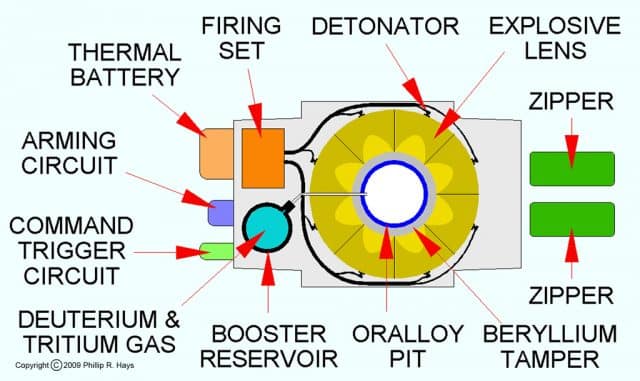
Boosting requires millions of neutrons to flood the fissile core very rapidly with lots of heat and compression needed. But if you’re requirements are much more modest, (only a few kilotons or less) then just a small amount of neutrons are only needed to spark a single fission chain reaction. Then the quantity of fusion generated with a spherical shock implosion from an HE shell can produce enough fission to start the fusion chain reaction. The purpose of the deuterium hydrates is to act as a moderator for the neutrons, which will allow a much smaller quantity of fissile material to be used for a given critical mass. Unfortunately, moderating implies slowing of the blast detonation sequence, just what you don’t want in a big device. That’s why they fizzle. But for a small device, it will work just fine. IE a micro-nuke.
The main benefit of using a moderator in a neutron bomb is that the amount of fissile material needed to reach criticality is greatly reduced. The slowing of fast neutrons will increase the total cross-section for neutron absorption, thus greatly reducing the critical mass and allowing for a much smaller amount of fissile material to be used in a weapon. A side effect of this is that as the chain reaction progresses, the moderator will be heated, losing its ability to properly control the velocity of the neutron.
Another effect of moderation is that as the time between subsequent neutron generations is increased, Alpha is slowed down thus slowing down the total reaction time. Producing a lower yield. This makes the containment of the explosion a problem; the inertia that is used to originally confine the implosion will not be able to hold the reaction together long enough. The end result will be a lower fizzle yield instead of a big bang. The explosive power of a fully moderated explosion is thus limited, at worst it may be equal to a chemical explosive of similar mass and at best about 6kt in yield.
Quoting Heisenberg:
“One can never make an efficient explosive weapon with slow neutrons alone because the neutrons will only move at thermal speeds, with the result being, that the reaction is so slow that the weapon explodes (disassembles) before the reaction is complete.”
While a nuclear bomb working only on thermal neutron expansion alone may be impractical, modern weapons designs still benefit from some level of moderation. A beryllium tamper used as a neutron reflector also acts as a moderator slowing neutron production in boasted weapons. If the expansion rate of the neutrons can be properly regulated to a compromising velocity then a small neutron device will work very well based on this principle. With the effect of producing a slow-burning nuclear thermobaric weapon with a massive heating effect and a very small blast effect. This is then basically an enhanced radiation weapon of a 5th generation design. Also called a mini or micro nuke.
The concept of pre-initiation problems is only an issue with the old style WW2 era (1945) (Fatman) solid core pure implosion PU based weapons. Boosted weapons or neutron moderated weapons along with gun implosion uranium-based weapons do not have this problem. There is a major misconception amongst the general public as to how these weapons really work. Modern weapons do not have this pre-detonation problem and virtually any fissile PU or HEU material over 80% pure will work. And if you want a really slow burn with low fallout and limited blast damage range, then a moderate or slow burn neutron bomb works best.
By simply re-manufacturing the already built and paid for 6,000 plus military surplus pits that the US government has in long term 100-year storage. These weapons could easily be produced so cheaply that they would make all future long-range manned bomber designs obsolete. Rember 1 kiloton of nuclear energy is equal to about 20, B-52 Vietnam era bomb loads. At a cost of over 100 million dollars per bomber. Do the math. Which one is cheaper a single 1 kt nuke weighing less than 1,000 lbs sent by a cruise missile, or dropped by an F-16; or twenty B-52 bombers costing over 2 billion dollars doing the same thing with conventional TNT based explosives.
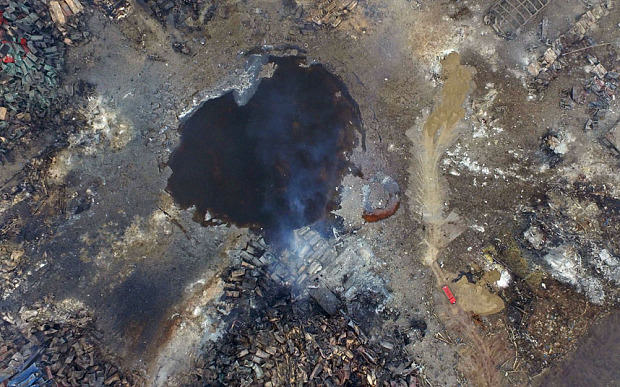
In the “High-Impact Terrorism: Proceedings of a Russian-American Workshop (2002)”, The National Academies Press, stated that the average citizen had very little actual knowledge about how nuclear weapons work and that during a planned terrorism attack, these misconceptions would be greatly preyed upon by the terrorists in order to produce a general sense of panic so needed in order to disrupt our system of government.
This is a list of some of the most common misconceptions about nuclear weapons use:
- “There was no significant fallout in the vicinity of the Hiroshima and Nagasaki bombings. All radiation injuries were a result of immediate (first 1 minute) radiation.” True.
- “The only cases of significant fallout exposure as of 1964 to individuals, was in the Marshall Islands after a U.S. test. The short term effects were skin ‘burns’. As of 1964, no long term effects were known, although a slight excess cancer rate would be expected based on modern knowledge.” True.
- “Almost all radioactivity in fallout – even in a ground burst – comes from the fission products themselves or transmutation of parts of the weapon. Thus air bursts and ground bursts produce approximately the same amount of radioactive products. However, ground bursts cause much more of the radioactive debris to be deposited within a fallout pattern, rather than distributed (and accordingly diluted and decayed) across the entire planet.” True.
- “The blast effect is primarily determined by the “overpressure” – given in English units in PSI. A human being can withstand up to about 35PSI of peak overpressure from a nuclear blast (1% fatality rate). Your distance may vary. Thus a human will almost always survive the blast overpressure at approximately the following distances (slant range) from a blast according to the following table”: when we extrapolate these statistics, we see that the news reports from other blasts are consistent with these scientific data. True.
Our calculations tell us that these so-called terrorist blasts are probably small tactical nuclear warheads in the vicinity of 0.01 kilotons and up to 5 KT or slightly larger in size. All the reported facts from these blasts indicate an exceedingly small nuclear warhead was used that is now being passed off as a large conventional explosive that ignited propane gas cylinders. But the reported facts of the blasts are consistent with our calculations produced by such a small nuclear explosion.
Any blast crater that is larger than 6 feet wide requires more than 4,000 lbs of TNT to make it. 16,000 lbs of TNT will only make a 10-foot wide crater. So when you see a 60 or a 100-foot wide crater that’s too big to be caused by conventional explosives and when you see a flash that is brighter than the sun followed by an ever-expanding and rising fireball. That’s a nuke. Everything else is just a secondary explosion going off.
In any explosion. There are 3 types of explosions to be considered;
- A molecular mater based explosion such as TNT: Producing a dark black cloud of dust and a single point of detonation throwing up a lot of dirt and producing a strong shock wave. Multiple secondary explosions can be involved. Coats everything with a dry black powder residue.
- A vapor or fuel-air/dust explosion: Producing a very large red and orange fireball. May have multipoint ignition sources from exploding fuel or gas /propane tanks. It also leaves an oil residue on everything from unburnt hydrocarbon fuel residue.
- A nuclear blast explosion: Producing a single point explosion with a very bright white flash that is spherical in shape. Followed by a rising fireball and a mushroom dust cloud. Then a delayed shock wave. It leaves behind lots of very fine white or gray ash/powder residue and many chunks of dirt or pulverized cement and melted metal.
In the case of the recent China blasts, all three types of explosions were used by the offenders. With the first conventional explosion masking the second larger nuclear explosion, followed by the third massive fuel-air vapor explosion being set off by the nuke to mask its use, with the ever-burning hot plasma fireball turning everything into white ash. The overpressure collapsing the roofs of the cars and blowing out the glass.
Thermal radiation vaporizing the car tires and glass that was then ashed with the radiation effects melting and toasting the cars at over 2,000 degrees centigrade. The massive 400-foot wide crater being created from the overpressure blast of the nuclear weapon estimated to be between 1.4 and 2.8 Kt in size. The fracture zone around the crater proving that it was a low altitude surface burst and the soil debris extracted from the crater floor being deposited all over the place looking like big chunks of dirt clods. If you have ever seen photographs of a neutron bomb test this is exactly what it looks like.
Surface Crater
In the case of near-surface, surface, and shallow sub-surface bursts, the fireball’s interaction with the ground causes it to engulf much of the soil and rock within its radius and remove that material as it moves upward. This removal of material results in the formation of a crater. A near-surface burst would produce a small, shallow crater. The crater from a surface burst with the same yield would be larger and deeper; crater size is maximized with a shallow sub-surface burst at the optimum depth. The size of the crater is a function of the yield of the detonation, the depth of burial, and the type of soil or rock.
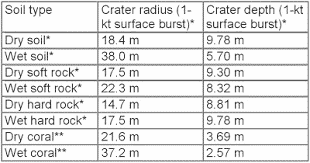
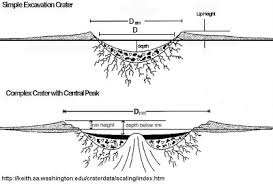
Where have we seen this effect used before?
In clandestine terrorist attacks but unrecognized by the general public due to their misunderstanding of nuclear weapons effects and the many modes available that can be used by the clandestine attacker.
A. Bali
The 2002 Bali bombings occurred on 12 October 2002 in the tourist district of Kuta on the Indonesian island of Bali. The attack killed 202 people (including 88 Australians, 38 Indonesians, and people from more than 20 other nationalities). A further 209 people were injured.
Various members of Jemaah Islamiyah, a violent Islamist group, were convicted in relation to the bombings, including three individuals who were sentenced to death. The attack involved the detonation of three bombs: a backpack-mounted device carried by a suicide bomber; a large car bomb, both of which were detonated in or near popular nightclubs in Kuta; and a third much smaller device detonated outside the United States consulate in Denpasar, causing only minor damage. An audio-cassette purportedly carrying a recorded voice message from Osama Bin Laden stated that the Bali bombings were in direct retaliation for support of the United States’ war on terror and Australia’s role in the liberation of East Timor.
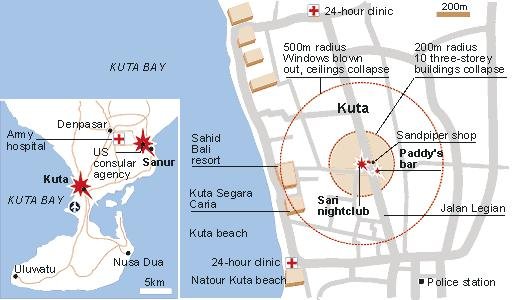
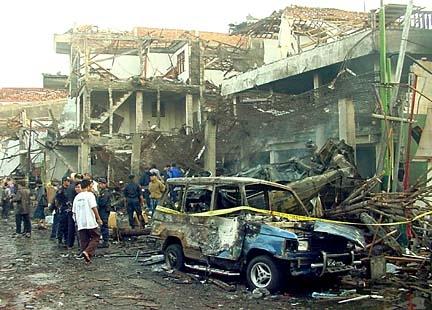
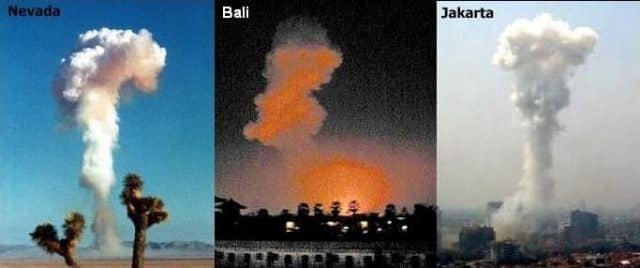
B. Khobar towers
The Khobar Towers bombing was a terrorist attack on part of a housing complex in the city of Khobar, Saudi Arabia, located near the national oil company (Saudi Aramco) headquarters of Dhahran on June 25, 1996. At that time Khobar Towers was being used as quarters for foreign military personnel.
A truck-bomb was detonated adjacent to Building #131, an eight-story structure housing the United States Air Force personnel from the 4404th Wing (Provisional), primarily from a deployed rescue squadron and deployed fighter squadron. In all, 19 U.S. servicemen were killed and 498 of many nationalities were wounded. Although al-Qaeda has been described by some sources as the likely culprit, the official June 25, 1996 statement by the United States named members of Hezbollah Al-Hejaz (English: Party of God in the Hijaz) as responsible. In 2006, a U.S. court found Iran and Hezbollah guilty of orchestrating the attack.
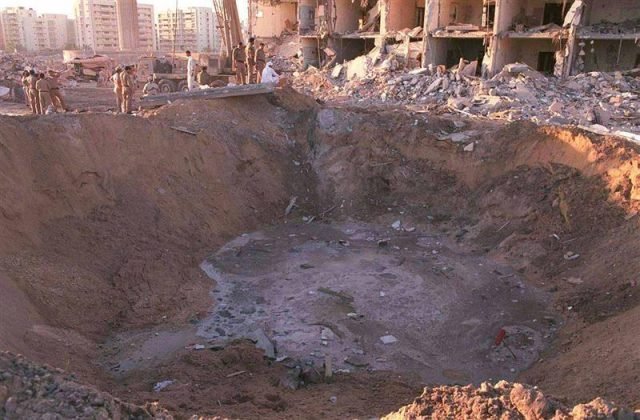
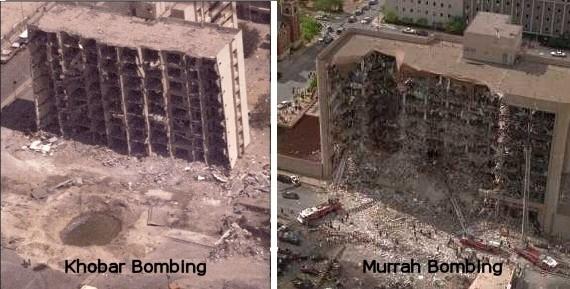
C. Lebanon – US Embassy in Beirut
The April 18, 1983, United States embassy bombing was a suicide bombing in Beirut, Lebanon, that killed 63 people, mostly embassy and CIA staff members, several soldiers, and one Marine. 17 of the dead were Americans. Of the Americans killed, eight worked for the Central Intelligence Agency, including the CIA’s top Middle East analyst and Near East director, Robert C. Ames, Station Chief Kenneth Haas, and most of the Beirut staff of the CIA.
It was the deadliest attack on a U.S. diplomatic mission up to that time and is thought of as marking the beginning of anti-U.S. attacks by Islamist groups. The attack came in the wake of the intervention of a Multinational Force, made up of Western countries, including the U.S., in the Lebanese Civil War, to try to restore order and central government authority.
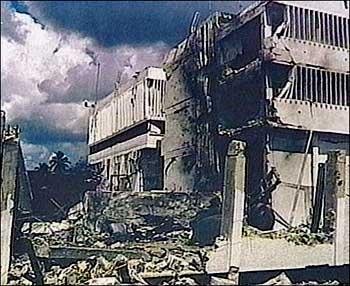
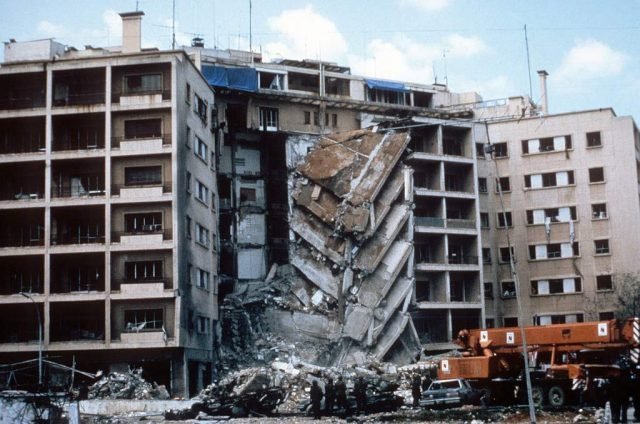
D. Oklahoma City
The Oklahoma City bombing was a domestic terrorist bomb attack on the Alfred P. Murrah Federal Building in downtown Oklahoma City on April 19, 1995. Carried out by Timothy McVeigh and Terry Nichols, the bombing killed 168 people and injured more than 680 others. The blast destroyed or damaged 324 buildings within a 16-block radius, destroyed or burned 86 cars, and shattered glass in 258 nearby buildings, causing an estimated $652 million worth of damage.
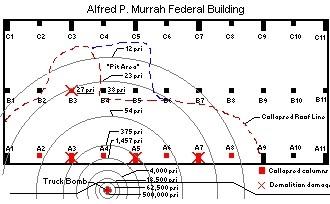
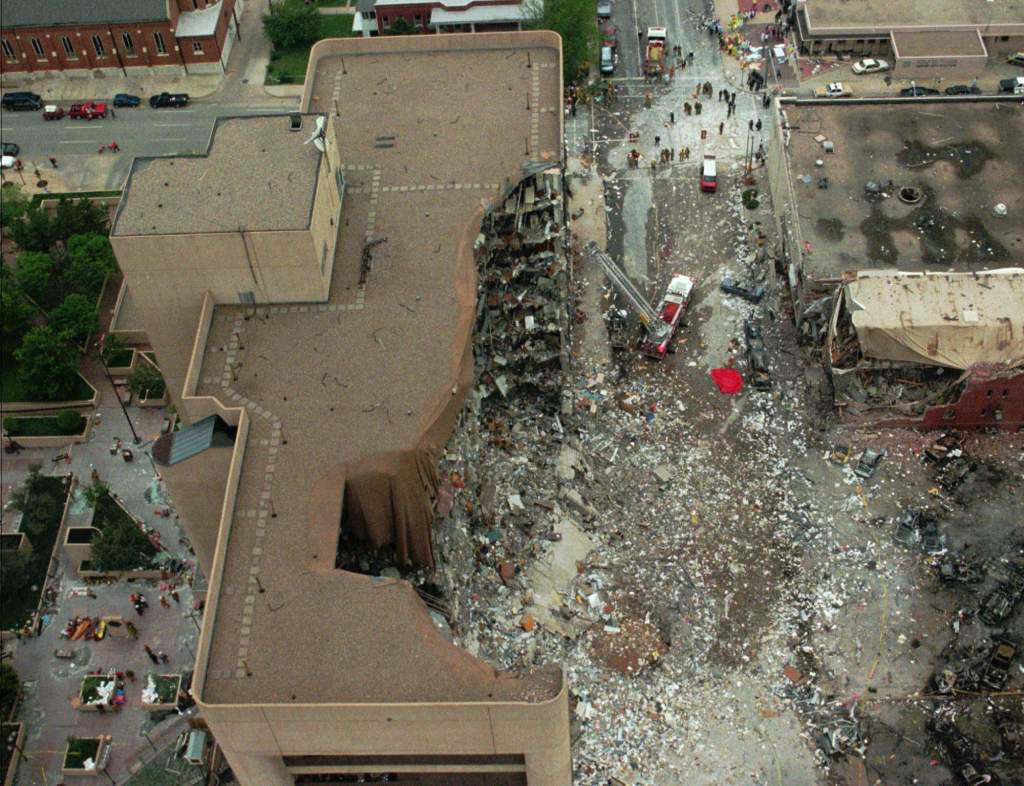
E. 911
You will find not a single word in the mainstream media about the nuclear nature of 9-11. However, here at VT we have published a large number of articles that detail every aspect of this most heinous crime.
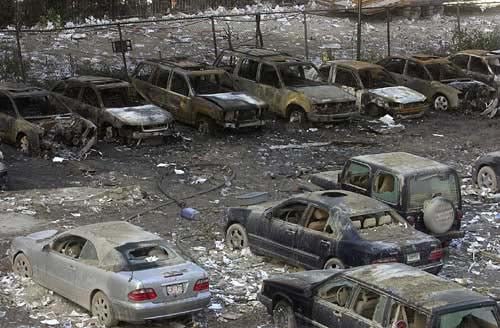
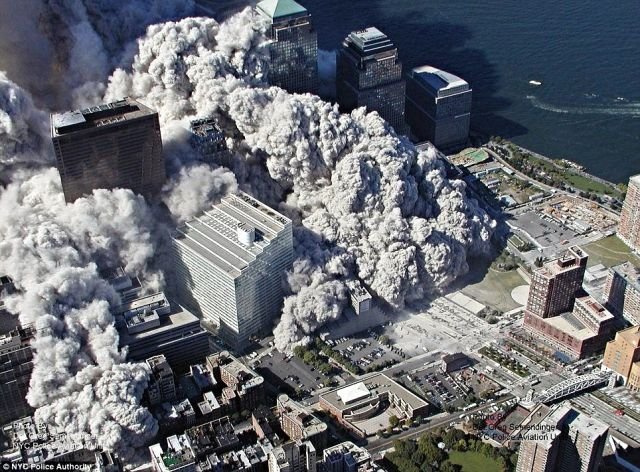
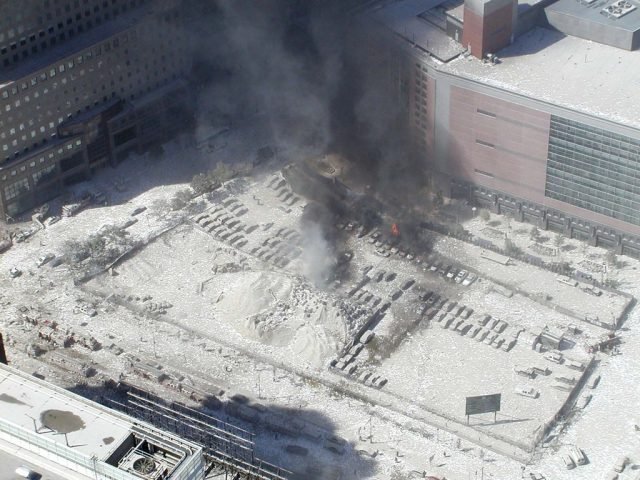
F. Ukraine
Again, the MSM will never mention this incident in August 2014 was nuclear but VT published the truth; a missile strike with a nuclear warhead:
https://www.veteranstodayarchives.com/2015/02/13/kiev-missile-nuked-donetsk/
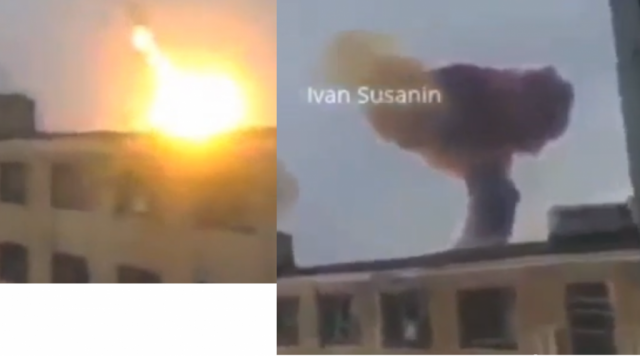
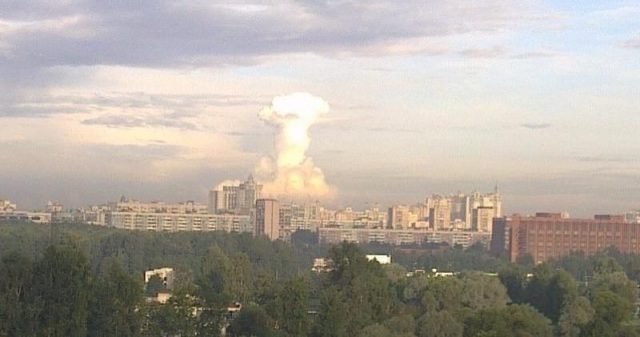

G. Afghanistan – 2002, attacking the Tora Bora caves
Just as “Little Boy” and “Fat Man” was rushed to the Pacific Theater in time to be tested on the starving Japanese citizenry before the emperor’s surrender pleas leaked to the press, the nuclear version of the bunker-busting GBU-28 was rushed to Afghanistan to conduct remote field tests before the Taliban surrendered.
The nuclear version of the GBU-28 bunker buster is the B61-11. When American forces targeted Tora Bora in 2001, there were 150 B61-11s in the U.S. arsenal. Featuring nuclear warheads that could be dialed from 0.3 to 340 kilotons – equivalent of 300 to 340,000 tons of radioactive TNT – these new Earth Penetrating Weapons were, according to atomic scientists, capable of “destroying the deepest and most hardened of underground bunkers, which the conventional warheads are not capable of doing.” [Bulletin of the Atomic Scientists May/June 1997; Wired Oct 8/01]
According to sources, under the cover of massive DU-tipped bombs that raised dirty mushroom clouds in thunderous explosions that rained radioactive dust over Jalalabad and nearby villages, the first nuclear bombs dropped since Basra in 1991 were detonated by American forces in Afghanistan beginning in March 2002. Before their field tests were concluded, United States forces would explode four 5-kiloton GBU-400 nuclear bombs in Tora Bora and other mountainous regions of Afghanistan.
H. Iraq – Basra, 1991
According to U.S. military sources, the first detonation of a nuclear weapon against another country since 1945 took place approximately 11 miles east of Basra, sometime between February 2 and February 5, 1991.
By then, Iraq’s former capital had been declared a “free-fire zone” – open to carpet-bombing by high-flying formations of eight-engine B-52s. “Basra is a military town in the true sense,” military spokesman General Richard Neal told the press. “The infrastructure, military infrastructure, is closely interwoven within the city of Basra itself.”
Though the soon-to-be fired General Neal claimed there were no civilians left in Basra, the city was actually sheltering some 800,000 terrified residents. In direct violation of Article 51 of the Geneva Protocols, which prohibits area bombing, the B-52s commenced saturation grid-bombing of the city. Mixing fuel-air bombs with shrapnel-spraying cluster bombs, the bombers leveled entire city blocks, the Los Angeles Times reported, leaving “bomb craters the size of football fields, and an untold number of casualties.” [Washington Post Feb 2/91; Los Angeles Times Feb 5/91]
With the city of Basra resounding to gigantic explosions and engulfed in “hellish nighttime of fires and smoke so dense that witnesses say the sun hasn’t been clearly visible for several days at a time,” a 5-kiloton GB-400 nuclear bomb exploding 11 miles away under the desert attracted no notice. [deoxy.org; Los Angeles Times Feb 5/91]
I. Pakistan – Islamabad Marriot Hotel Bombing
The Islamabad Marriott Hotel bombing occurred during the night of 20 September 2008, when a dump truck filled with explosives detonated in front of the Marriott Hotel in the Pakistani capital Islamabad, killing at least 54 people, injuring at least 266, and leaving a 60 ft (20 m) wide, 20 ft (6 m) deep crater outside the hotel. The majority of the casualties were Pakistanis; although at least five foreign nationals were killed and fifteen others reported injured. The attack occurred mere hours after President Asif Ali Zardari made his first speech to the Pakistani parliament. The Marriott hotel was the most prestigious hotel in the capital, located near government buildings, diplomatic missions, embassies, and high commissions.
During the investigation, three suspected terrorists were arrested by the Pakistani police. They were suspected of having facilitated the suicide bomber. However later they were acquitted of all charges as no evidence was ever presented against them.
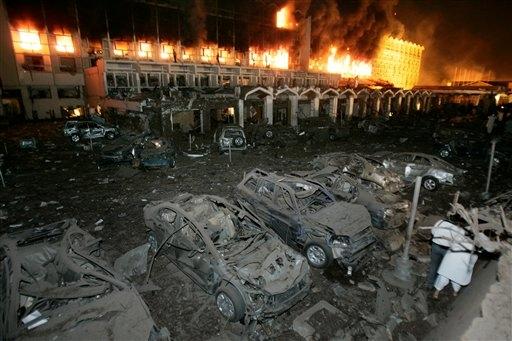
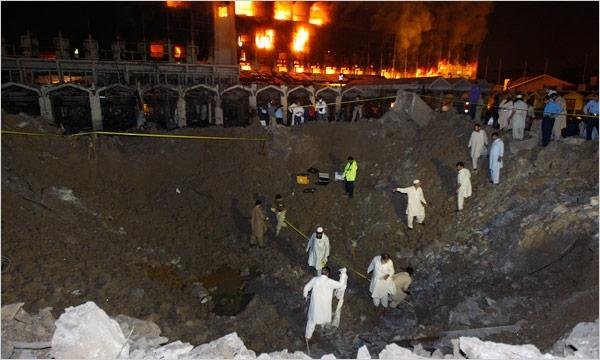
J. Yemen
May 2015, outskirts of San’a. Another incident ignored by the MSM but we at VT broke the story :
https://www.veteranstodayarchives.com/2015/05/29/how-israel-was-busted-nuking-yemen/
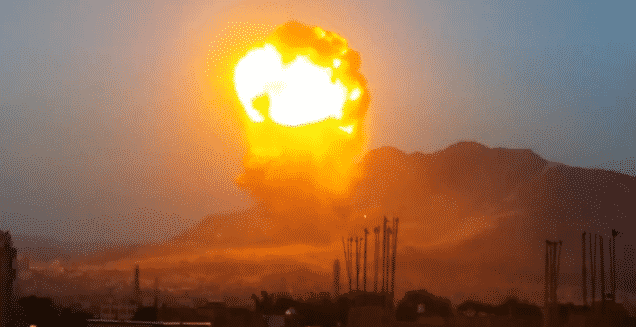
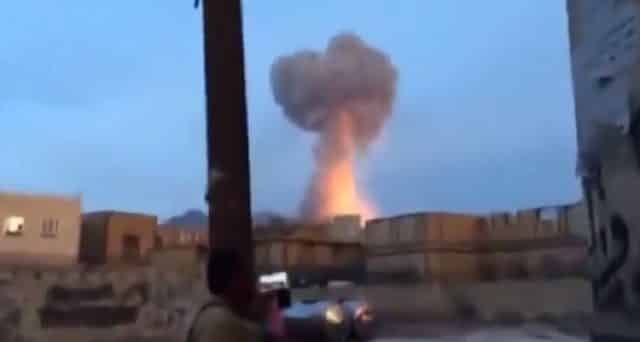
K. China
Tianjin was hit first and we at VT were the only ones who told you the truth. Two more strikes against Dongying and Zibo have taken place, which we will be reporting on in the coming days.
https://www.veteranstodayarchives.com/2015/08/25/confirmation-tianjin-was-nuked/
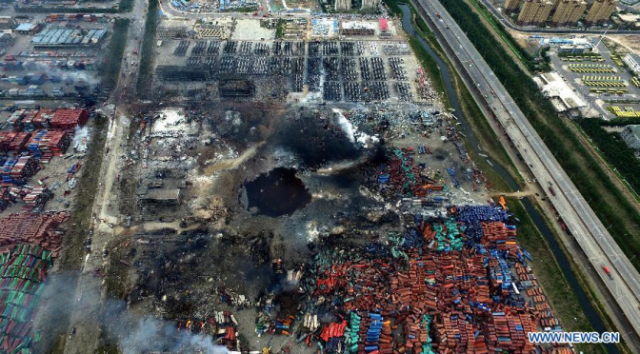
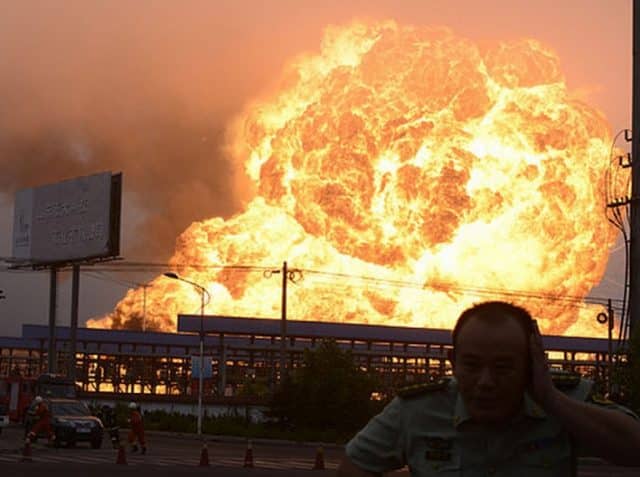
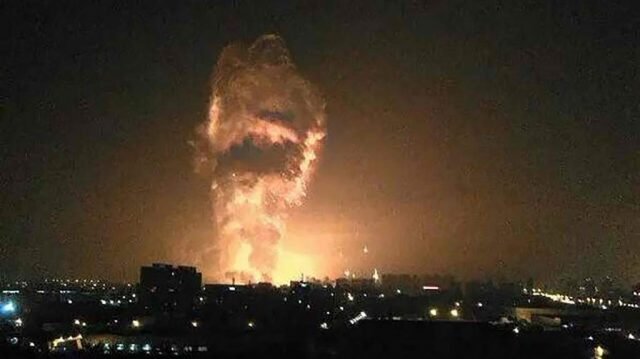
Source
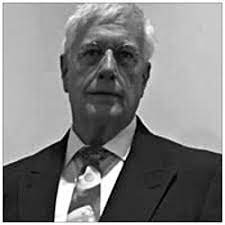
Gordon Duff posted articles on VT from 2008 to 2022. He is a Marine combat veteran of the Vietnam War. A disabled veteran, he worked on veterans and POW issues for decades.
Gordon is an accredited diplomat and is generally accepted as one of the top global intelligence specialists. He manages the world’s largest private intelligence organization and regularly consults with governments challenged by security issues.
Duff has traveled extensively, is published around the world, and is a regular guest on TV and radio in more than “several” countries. He is also a trained chef, wine enthusiast, avid motorcyclist, and gunsmith specializing in historical weapons and restoration. Business experience and interests are in energy and defense technology.
ATTENTION READERS
We See The World From All Sides and Want YOU To Be Fully InformedIn fact, intentional disinformation is a disgraceful scourge in media today. So to assuage any possible errant incorrect information posted herein, we strongly encourage you to seek corroboration from other non-VT sources before forming an educated opinion.
About VT - Policies & Disclosures - Comment Policy

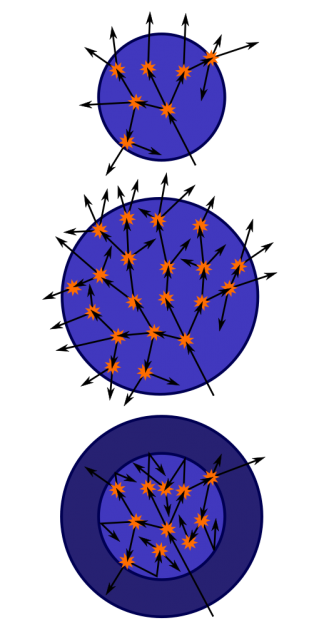
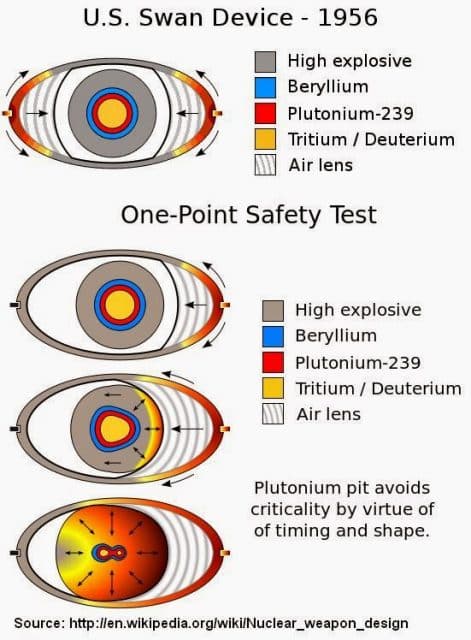

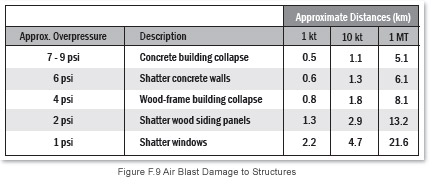
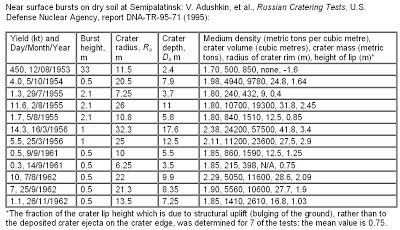
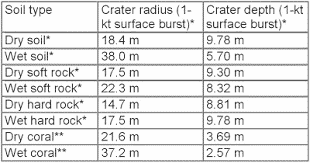

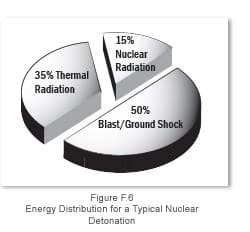
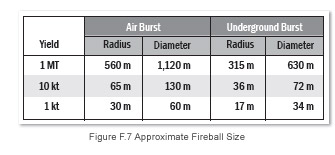
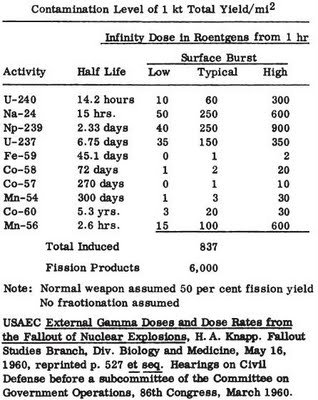
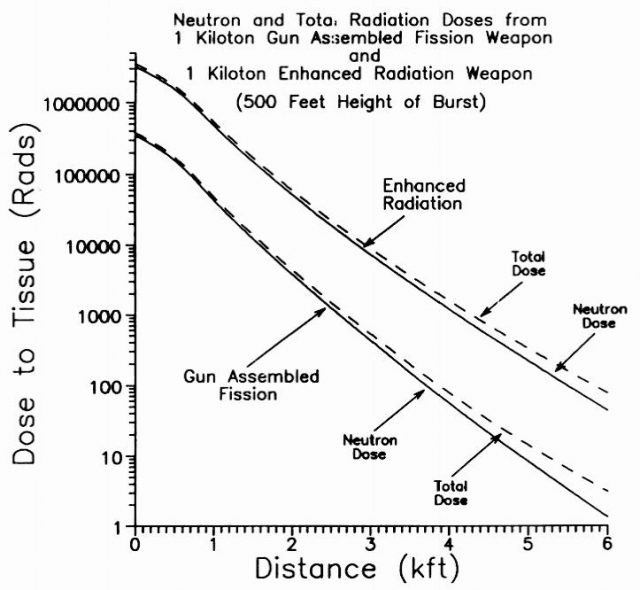
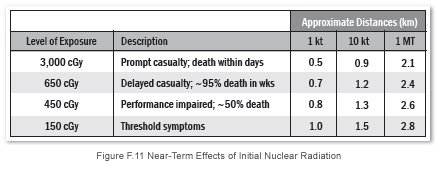
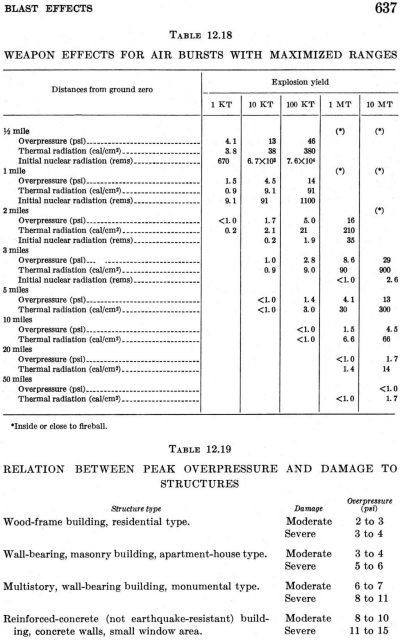



I believe you’re analysis that nukes have become the bomb du jour. What was the motive for Tianjin, and who benefited, and why would China stand still for such a thing?
Two other nukes not mentioned here were the Marine Barracks in Beirut and the first WTC bombing both which look rather suspicious.
Comments are closed.